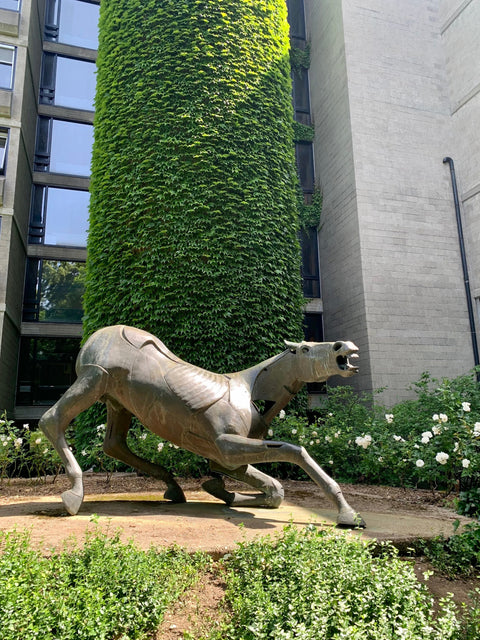A Hidden Sculpture in the Faculty Garden
Tucked away in the small garden of the Faculty of Arts (Erasmushuis) in Leuven, the statue “Falling Horse” (Vallend Paard) is one of the city’s lesser-known but deeply symbolic artworks.
Created by Rik Poot
The sculpture was designed by Belgian artist Rik Poot (1924–2006), who is also known for his monumental work The Four Horsemen of the Apocalypse in Bruges’ Arendts Garden. Poot often explored the theme of horses and riders, a classic subject in art history, but with his own unique and emotional approach.
A Different View of Horse and Rider
Unlike the heroic horses commonly depicted in art, Poot’s horse is shown as falling, fragile, and broken. This tragic imagery challenges traditional ideals of strength and victory, instead highlighting vulnerability and interdependence.
A Symbol for Students
At KU Leuven, the Falling Horse carries a special meaning for students. The symbolism suggests that if the horse falls, the rider falls too—a reminder of how people rely on one another. Just as students achieve more when they support each other, the sculpture embodies the importance of solidarity, collaboration, and resilience.

Lost-wax technique
A nice detail is that the sculpture was made using the lost-wax technique. A lump of bronze with a round wax was fired in a kiln for 10 days at 500 degrees Celsius. Afterwards, the artist poured the glowing bronze into the mould, which was dug into the floor of the studio. After cooling, he removed the mould from the ground and crushed it, revealing the sculpture.
(source: leuven.be)
( Source: https://www.tripadvisor.com/) photo by Aslı Tezcan
https://standbeelden.be/standbeeld/768



